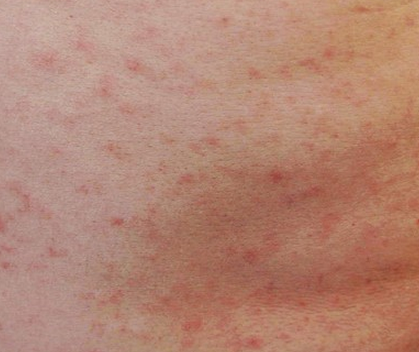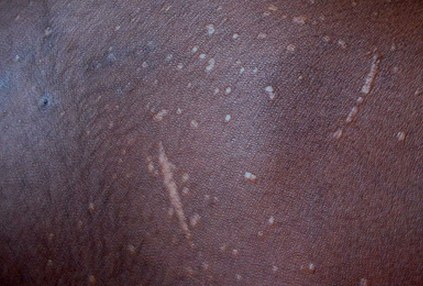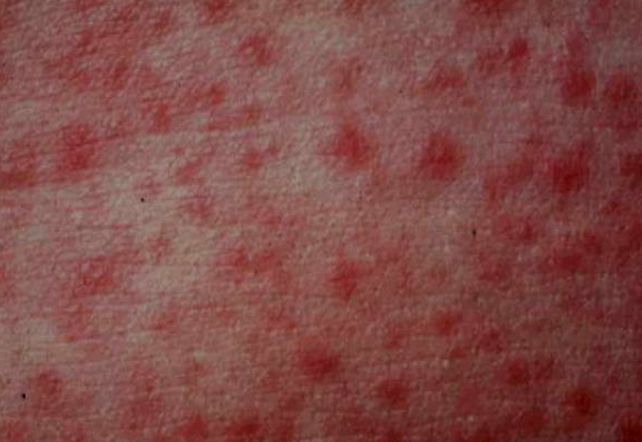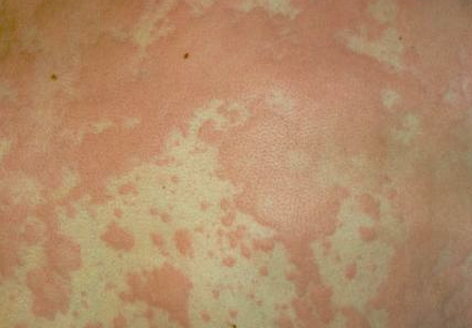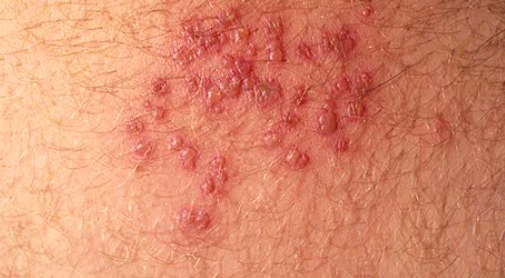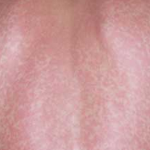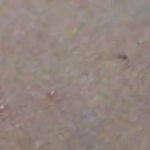HIV rash is a common condition among HIV patients. This rash occurs among 80% of all people who are infected. It has a red color and varies depending on the degree of HIV infection. In all cases there will be raised skin bumps.
What are the symptoms of HIV rash?
After someone gets infected with HIV he or she will develop the rash after about 2-3 weeks. The rashes appear on any part of the body, but commonly around the face, chest, back, eyes and the genitals. In men, there are additional symptoms of developing sores and fluid filled blisters around the eyes, genitals and mouth. Here are some of the signs that come with this rash.
- The patient will get brown or red bumps that look similar to those found in eczema patients.
- The bumps mentioned above will be very itchy.
- The skin of the patient peels of periodically.
- The patient also develops high fever and a lot of diarrhea.
- There is a loss of weight and the patient will suffer from frequent headaches.
- The patient will also lose memory, and will have visual impairment.
- The glands of the patient will also swell, and this will be accompanied by joint and muscular aches.
These symptoms can become worse as the HIV advances, thereby causing several complications.
What causes the HIV rash?
The HIV virus will be found in high concentrations in areas surrounding the vagina, anus, mouth and eyes. The infection will progress in stages, but the painful rashes characterize the initial stages of the disease. This is due to the effect of the conversion of the blood serum when the antibodies are produced in an effort to fight the virus. On the other hand, antiretroviral medicines that are used to lower the HIV virus population during the initial stage can also cause the rash to occur, despite the low population of the virus. The suppression of the immune system can also cause other infections which will result in the HIV rash.
It is very difficult to tell if the rash is caused by the HIB virus or another condition by simply examining the patient physically. There are two blood tests that must be done in order to ascertain whether a patient has HIV rash. The first test will be to determine the level of the CD4 count in the blood. People who have a low CD4 count will have a high viral load, and the disease will have progressed substantially. This test is also used to determine the success of any treatment regimen that the patient will be put on.
What is the treatment for HIV rash?
The rashes will appear a few weeks after the patient is infected with the HIV virus. It will then disappear during the dormant or asymptomatic phase. The disease does not have a complete cure and can only be managed. Therefore whenever the patient experiences the rash, then he or she must follow the treatment regimen for rashes. The treatment for these rushes includes:
- One should take cold or tepid showers since hot water aggravates the rash.
- The patient should also use mild detergents and toiletries. All soaps should be herbal in nature, and not chemical.
- The patient should wear clothes that allow the skin to breathe and be free. He or she should avoid wool, but use cotton.
- The patient should also have an air-humidifier.
- The patient should use moisturizers that have calamine to reduce the inflammation of the rash.
- The patient can also use corticosteroids to reduce the feeling of itching.
- The patient should also avoid taking antihistamines without a doctor’s approval. All medication must be sanctioned by a doctor. The side effects of some medications could cause the rash to flare up.
- The patient should avoid extreme temperatures so he or she should stay away from direct sunlight or extreme cold.
- The patient should avoid unprotected sex since this could infect a healthy person, or re-infection can occur, thereby causing the rash to flare up.
- If drugs are not the cause of the rash, then the medical course, also known as Highly Active Antiretroviral Therapy (HAART), should be continued. The course will increase the T-cell count, and they will attack the condition that is causing the rash to occur, thus clearing up the rash.
Since the rash is a sign of HIV infection, which can be a deadly risk to life, it should be taken seriously. If anyone experiences these rashes, then he or she should visit a doctor and see if the rashes are caused HIV. If they are, then the doctor will start you with the medicines, and this should help keep the virus at low levels. The doctor will also direct you to a nutritionist, who will advise you on how to eat healthy foods.
HIV Rash Pictures
Here are HIV rash images and how they appear on the skin
